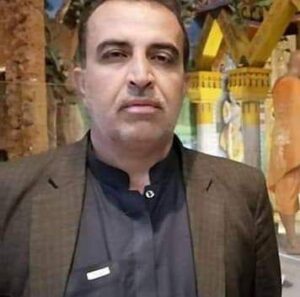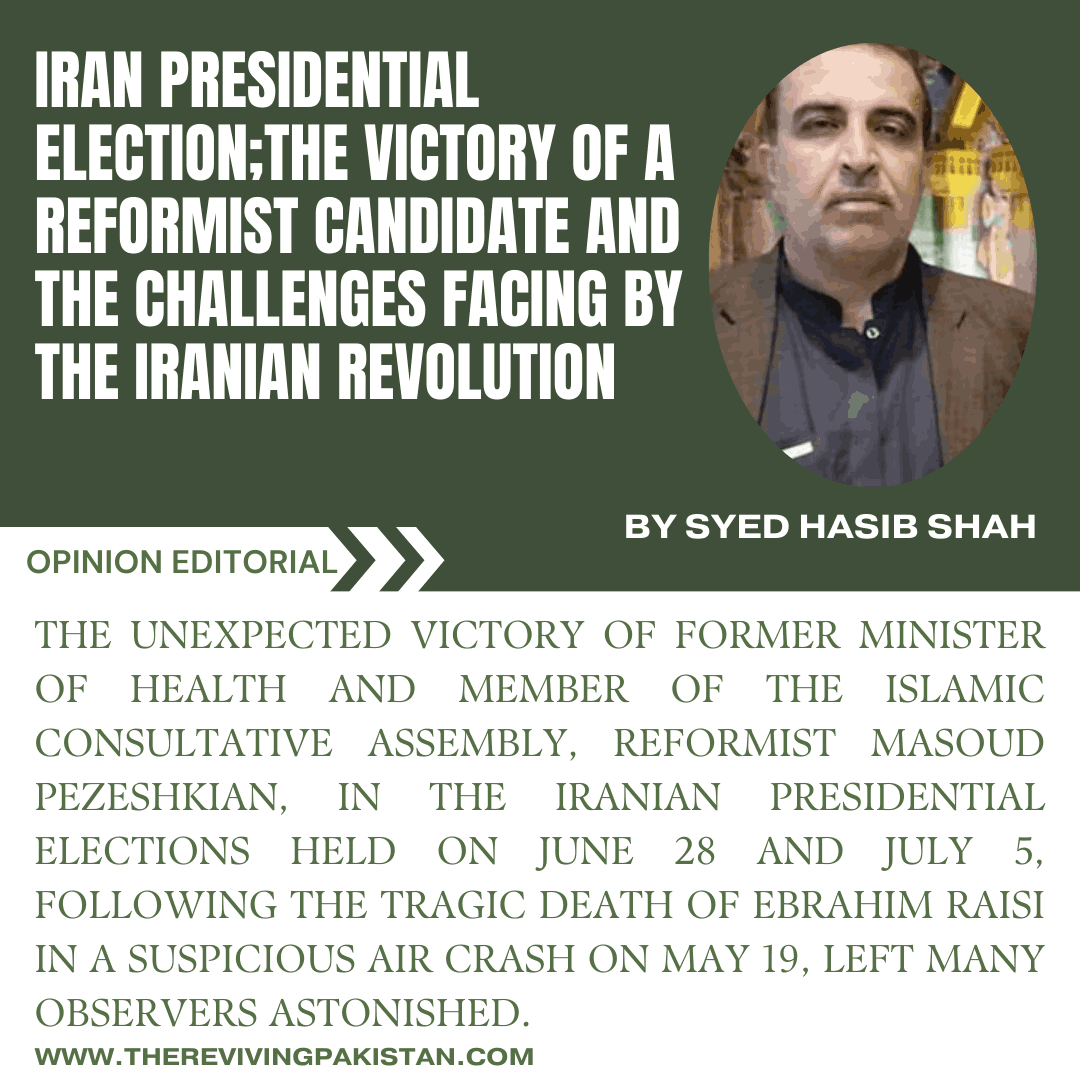About the Author(s)

Syed Hasib Shah
Author is an Assistant Professor in Higher and Technical Education Department Government of Pakistan since 2007. Alongside, he write on political, social, contemporary and literary issues both in Urdu and English in various Pakistani newspapers.
The unexpected victory of former Minister of Health and Member of the Islamic Consultative Assembly, reformist Masoud Pezeshkian, in the Iranian presidential elections held on June 28 and July 5, following the tragic death of Ebrahim Raisi in a suspicious air crash on May 19, left many observers astonished. In the second round, Pezeshkian emerged victorious as the ninth President of Iran, defeating hardliner Saeed Jalili, a close ally of Supreme Leader Ayatollah Khamenei, and former chief nuclear negotiator, former Secretary of the National Security Council, and current member of the Expediency Discernment Council. The elections also featured other prominent figures, including former Tehran mayor and current Speaker of the Islamic Consultative Assembly, Mohammad Bagher Ghalibaf, and Interior Minister Mostafa Pourmohammadi.
In the first round of elections on June 28, no candidate secured the required 50% of the vote. Pezeshkian received 44%, Jalili 40%, Ghalibaf 14%, and Pourmohammadi only 1%. Consequently, a runoff was held on July 5 between the top two contenders, Pezeshkian and Jalili. Pezeshkian won decisively with 54.76% of the votes, while Jalili garnered 45.24%. Once again, the Iranian public expressed its dissatisfaction with the religious conservatives who have held power since the 1979 Revolution.
This was the 5th out of 10th presidential elections since 1989 in which reformists triumphed. Only five elections saw victories for the conservatives, including the highly controversial 2009 election where hardliner Ahmadinejad defeated reformist Mir Hossein Mousavi in the first round with a surprising 63% of the vote. Despite all pre-election surveys predicting a second-round runoff, Ahmadinejad’s unexpected victory led to the widespread “Green Movement” or “Persian Awakening,” a nationwide protest that lasted for nearly six to seven months, resulting in dozens of deaths and thousands of arrests. Eventually, the state quelled the movement with severe repression.
Turning to Pezeshkian’s reformist agenda and the challenges he faces in implementing it, he openly expressed his disdain for mandatory hijab and the morality police during his campaign. He promised to dismantle the morality police, relax hijab laws and cultural restrictions, and expand social freedoms. However, he also affirmed his commitment to the core principles of the Revolution and the Supreme Leader. Despite favoring Pezeshkian’s reformist agenda,the Iranian public did not show the same enthusiasm they had for Mohammad Khatami (1997-2005) or Hassan Rouhani (2013-2021), mainly due to the previous reformist presidents’ failure to deliver on their agendas despite serving two terms each. This lack of confidence resulted in a low voter turnout of just 39%, as the public is acutely aware of the entrenched power structure dominated by the Supreme Leader and the Guardian Council. They believe no reformist candidate can challenge this power structure, reduce the Supreme Leader’s and Guardian Council’s overarching authority, or increase the powers of the presidency and parliament. Consequently, many see the reformist agenda as mere election rhetoric with little chance of real change. This has led to a growing trend, especially among the intelligentsia, to leave the country.
If Pezeshkian manages to implement even a fraction of his reformist agenda, unlike his predecessors, and faces inevitable resistance from the conservatives, it could create a highly challenging situation for a country already suffering from three decades of Western sanctions and under constant threat from Israel. This is particularly concerning given that Iran openly supports Hamas, Hezbollah, and the Houthis in their conflicts with Israel, providing political, financial, and military aid. Recently, on April 19, Israel directly targeted Iran’s S-300 long-range air defense system in Isfahan, and on July 31, during Pezeshkian’s presidential oath taking ceremony, Israel assassinated former Palestinian Prime Minister and Hamas political wing leader Ismail Haniyeh in Tehran. In response to the first attack, Iran launched hundreds of missiles at Israel on the same day and is now poised to retaliate for Haniyeh’s assassination. In such volatile circumstances, any internal conflict between conservatives and reformists could have disastrous consequences for the Iranian Revolution and its future. Therefore, both sides must approach the situation with utmost seriousness, avoiding all forms of confrontation, and resolving issues through mutual consultation and understanding.

